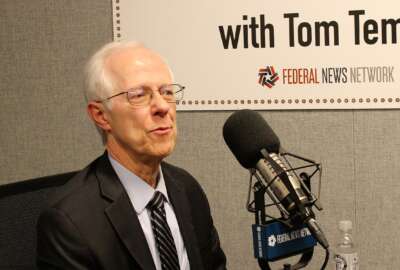Pentagon’s top three priorities for a better acquisition program
The Pentagon’s deputy undersecretary for acquisition said that when used properly, the adaptive acquisition framework will speed up and improve the acquisitio...
The Defense Department will prioritize three areas of concentration to strengthen and speed up its lumbering acquisition process. Instead of trying to reinvent the wheel, it will use the tools it has to operate more effectively.
Radha Iyengar Plumb, deputy undersecretary of Defense for acquisition and sustainment, described what she called the three “buckets” during a Center for Strategic and International Studies online event Wednesday.
“The Department of Defense has made really great progress over the last five to 10 years when it comes to prototyping. And what we’re really focused on now is getting that innovation, those new technologies to produce at scale in the right timeframe,” Plumb said.
She identified acquisition tools and authorities as the first area of concentration. She said those tools need to be used in concert as part of the DOD’s Adaptive Acquisition Framework to achieve maximum effectiveness. At an individual program level, that means using all the tools in the toolkit including other transaction authorities (OTA), middle tier acquisition, the software acquisition pathway and a range of hybrid strategies.
The key, she said, was remaining focused on the end result.
“We don’t want this to just be about more OTAs. It’s really about leveraging all of these authorities to scale capabilities,” Plumb said.
One example she offered as an efficient approach is the Competitive Advantage Pathfinders (CAP) initiative. Started in March 2022, CAP uses cross-department teams to identify common problems and fix them while continuing to deliver capability – or as the program webpage describes it — “building the plane while flying it.”
“Our first six pathfinders are all delivering capabilities within two years and accelerating those deliveries by an average of two to four years,” Plumb said.
One of the programs using CAP is Medusa, a joint project between the Air Force and the Navy to miniaturize a ship-based electronic attack module that is delivering capabilities within two years and will see an accelerated delivery of two to four years.
The second point of concentration Plumb described was removing barriers to integration. To start addressing the problem, DOD set up an acquisition integration interoperability team that works with systems acquisition to ensure it meets joint requirements. The office runs an integrated acquisition portfolio review that looks at the underlying service-specific programs and identifies where there are gaps or areas that need integration.
“The idea here is to establish faster, better processes to connect prototype contracts to production contracts, to scale integration to ensure that our joint requirements are met,” Plumb said.
The third major priority is recruiting and training the acquisition workforce. Plumb said her office planned more incentive programs in the future to drive recruitment through programs like the Defense Civilian Training Corps, a new program started in June that allows students at various universities to apply for scholarships in return for service commitments. The first cohort of the pilot program started last month.
“We need a continuous acquisition and sustainment workforce to continue doing the work, but also bringing in a new audience — digital natives, people who are much more familiar with a range of the software-enabled systems we’re talking about,” Plumb said.
To expand training options, Plumb said the Defense Acquisition University (DAU) and summer internships were offering more possibilities. Over the past year, DAU began offering more courses online to reach a broader population of the acquisition workforce.
“The goal is a calibration of the processes in the workforce to ensure that the door for new entrants in the defense marketplace is open. And that there’s a concierge of sorts waiting on the other side to help guide the purveyors of that critical technology across to success,” Plumb said.
Copyright © 2024 Federal News Network. All rights reserved. This website is not intended for users located within the European Economic Area.
Alexandra Lohr, a former staff member, covered the Defense Department for Federal News Network until September 2023.





